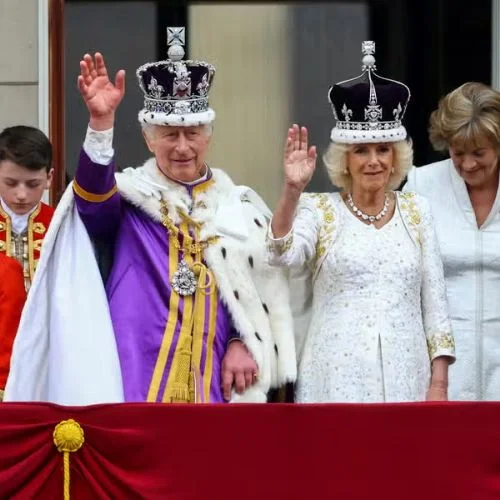Marvel fans have had more ways to indulge their enthusiasm than just consuming the comic books for nearly 35 years. A collection of officially sanctioned collector cards with images of people, places, and significant events from Marvel history (up to that point) was issued by Impel in 1990. Since then, not a year has passed without the release of new Marvel Trading Cards, some including exclusive artwork, some featuring special finishing touches like foiling, stamping, exclusive numbering, and holograms, and still others featuring… dubious… art direction.
However, admirers have always bought them up. And now, with the secondary market at its hottest point in years, we provide, in collaboration with eBay, a brief history of some of the highest highs—both monetarily and artistically—of Marvel collector cards, as well as some of the lowest lows.
Starting Point
Firsts matter, much like with most collectibles. The Impel Marvel Universe cards from 1990 were the first significant Marvel set in the trading card industry. Each card typically had fantastic art on the front depicting a character as they were in the comics at the time, marking an early appearance, or depicting a team or a historic fight. The cards were designed to feel like knockoffs of sports cards. They had made up statistics about the characters, such as “Battles Fought,” “Win Percentage,” or “Wrinkles on Face” (poor Aunt May), which sparked numerous hours of discussions in the playground. Later sets would incorporate relative strength levels, but due to the scale’s constraints, characters like the Hulk and Galactus would ultimately be depicted as equally powerful. Speaking as a preteen at the time, I remember how much fun it was to debate these topics.
And because this stuff was so awesome, the value of these early sets—particularly the 1990 Series 1 cards—has substantially soared. It will cost you more than $100 to get a gem mint Captain America Series 1 card, which may actually be a bargain. A few have sold at auction for four figures. Four times as much may be paid for a mint Venom. And the hologram cards’ worth keeps rising. Cosmic Spider-Man, Magneto, Silver Surfer, Peter Parker vs. Norman Osborn, and Wolverine were among the five exceptional holographic cards in the collection, which also included 167 regular finish cards. Even though it’s not in immaculate condition but isn’t overly damaged, a holographic 7.0 grade Wolverine will still cost you more than $65.
Image source: Trading Card Database
Examining the ‘90s’ challenges
Let’s be clear: there has never been a genuine decline in the quality of these cards. Pinups that would be transformed into these cards were routinely commissioned by Marvel from artists working on the comics. As a result, you could see Andy Kubert painting Sabretooth or Jim Lee’s X-Men squad. Additionally, you had the Hildebrandt brothers’ paintings for the Marvel Masterpieces set of playing cards for the first time, and some of these cards are stunning.
BUT! ’90s comic culture’s excesses did not spare Cards. Thus, gimmicks started to appear, and when they were terrible, they were extremely bad.
Take Spring Break 1995 as an example. Not the MTV Beach House partying at the occasion. the X-Men playing cards honouring the occasion. The Marvel Swimsuit Editions of the 1990s have received a great deal of justifiable derision over the years. Additionally, there is no logical explanation for a card depicting Wolverine using his claws to roast sausages, just as there is no logical explanation for a book consisting of pinups of Gambit playing beach volleyball while wearing a bikini bottom. The fact that you can’t generally give these cards away may not come as much of a surprise. But if you’re game to take the risk, they’d make fantastic discussion pieces framed and hanging on the wall.
Mapping out the Future
Marvel Trading Cards were enjoyable and ridiculous in the 1990s, but in more recent years, they have become interesting. Cards may visually do many of the same things that comics can, but because they are compact and made of cardboard rather than flimsy stapled pieces of paper, they can also try some fascinating things. Take Upper Deck’s 2021 Galactus card as an example. Galactus the Devourer will soon appear on film thanks to the Fantastic Four’s entry into the Marvel Cinematic Universe (MCU), which will increase the value of all artefacts connected to him. This card, though, excels for a very different reason.
The greatest comic book artist that has ever lived, Jack Kirby, is credited with creating Galactus. Galactus was first introduced by him and Stan Lee in the early Fantastic Four comics, and Kirby’s design was incredible. This behemoth was glistening with strength, crackling all around. It was humbling and terrifying to see him on paper. This being has incredible cosmic power, and his appearance is in keeping with that. It appears that the foiling on this card was intended to have a similar effect.
For a similarly bizarre character, the 2022 Upper Deck Kang card features a similar foiling effect. The foiling on this artwork does the character justice, so regardless of whether the price changes or not, it’s still lovely to look at. Kang still promised to be the major protagonist of this most recent phase of MCU movies, so the pricing here should go up dramatically.
Therefore, while external variables will determine which upcoming cards will appreciate in value, if you’re collecting to satisfy your passion, what’s coming out now should keep you full and content for a while.
What You Should Know Before Starting to Collect
Fausto Barrionuevo is a geek. Since we are a veritable Den of them, we say this with the highest respect. Like most of us, he began his nerdiness early. He explains, “I came across something called Silver Surfer when I was seven.” “And I thought, ‘This guy is extremely cool,’ and I immediately acquired a 1992 or 1993 Marvel Universe card to read about the character. On the front were Ron Lim’s paintings, while on the back were power ratings and a biography.
Everything about the character was revealed to me on the card. As a result, he eventually found himself in the position he holds today: Senior Advisor and Marvel Card Expert for Certified Collectibles Group, the company that grades and preserves all kinds of collectibles, from trading cards to comics to stamps to pretty much anything one could collect. From there, he set out to collect every Silver Surfer card produced. He was pleased to impart his expertise and experience to both new and seasoned collectors because he is passionate about Marvel cards and collecting in general.
1. Prioritising Cards
When you first begin a collection, there are two ways to determine worth. “Principle one.” Says Barrionuevo. “The card is valuable to you if you love it.”
There are cards that are indisputable assets. The Skybox Marvel Creator’s Collection Sketchagraph cards from 1998 are absurdly expensive, but one of them was a chase card that could only be located by assembling a set and mailing it to a redemption centre.
In exchange, they would get a Spider-Man card with Wieringo and Lee’s signatures on the back, drawn by renowned artist Mike Wieringo. There are currently only about 30 of those in the wild. Barrionuevo informs us that “that card is highly sought after because it’s practically unattainable.”
But there are other cards that hold personal value. The goal of collecting, according to him, is to have items that are either nostalgic or help you maintain track of an object’s history.
Therefore, even if Marvel decides to make Sleepwalker the focus of MCU phase 8 for some absurd reason, he won’t set the collector market on fire. But if you like the character, his look, and the stories he appears in, you should get as many cards with Sleepwalker on them as you can because people should support the things they care about.
2. Targeting Strategy
However, there is some helpful advice accessible if you’re a beginner collector seeking to choose new goods with long-term value.
Now that card makers are aware of how collectible their products are, they create their sets with collectors in mind. As of right now, “a lot of cards [have] parallels and variants, and sometimes they’re hard numbered,” according to Barrionuevo. So, if you wanted a specific card, you could look for it and discover a card with a very low number.
Additionally, pop culture value exists. It’s unlikely that Sleepwalker will appear in an MCU production, but if he does, demand will increase. One of Marvel’s first villains, Loki is also the one who gave the Avengers their fictional start and the brains behind countless major comic book events. However, the price of pertinent memorabilia (such as those early Impel cards from the 1990s) surged when it was revealed that he would get his own TV show, and then it stabilised at a respectably high level.
Image credit: Sports Card Investor
3. Keeping Your Collection Safe
Additionally, there are graded cards. The CCG team at Barrionuevo examines the state of the cards, grades them according to how well they have been cared for, and then locks them away in a durable plastic case to shield them from deterioration and the elements.
Additionally, the fact that graded cards can still be used sets them apart from other artefacts like comics. If you want to read a graded comic, you must have a backup copy because they are locked away and cannot be used again. The front and back of a graded card, however, can still be seen when it is presented.
Image Credits: CGC Trading Cards
4. One Clever Way to Compile Marvel Cards
Being passionate about the items you collect is ultimately the most important thing a collector can do. There is no secret to it; if money is your only motivation, you can find plenty of it, but the experience is diminished. He claims, “People that care about their work and want to do amazing things designed these cards. “Being a hobbyist is about being a part of the community,” said the speaker. It’s about sharing your passions with those who feel the same way. The actual value of collecting these cards comes from that perspective.















